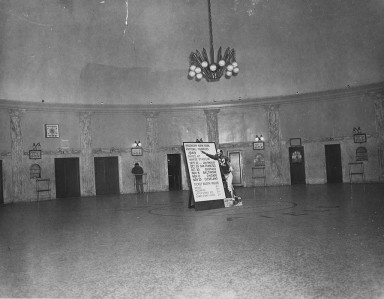Short Stops
Ebbets Explains New Stadium
Charles Ebbets, who began his rise from ticket seller to Dodger President, envisioned a baseball park with all of the modern amenities needed to continue to attract fans. Ebbets once wrote an article “Why I Am Building a Baseball Stadium” “Why I Am Building a Baseball Stadium” By Charles Ebbets, President Brooklyn Baseball Club, Leslie’s, The People’s Weekly, April 4, 1912 in 1912 in which he states, “I am a firm believer in the future of baseball, both in Brooklyn and the country at large. Otherwise I would not invest close to three-quarters of a million dollars in this new park. On May 12th I will enter my thirtieth consecutive year of service with the Brooklyn club, where I began as a ticket seller. In point of continuous connection with one club, I rank senior in all leagues, which, I think, gives my views weight.
“Now the Brooklyn club, of which I hold the controlling interest today, must move again, because we need more room, comfort and convenience for our patrons. This time we are going to build a permanent steel, brick and cement stadium, which I hope will shelter the Brooklyn club for many years after I have seen my last game. It will seat 25,000 persons and another 10,000 can be accommodated by emergency benches and field space. It will contain every convenience that we can devise and will be absolutely safe. I will no longer have to worry about fires, collapsing stands and other dangers that menace the spectators and of which they seldom give thought.”

The rotunda at Ebbets Field was part of Charles Ebbets’ vision for his new ballpark in 1912. The rotunda features a marble floor that reads “Ebbets Field” around a large baseball and a signature chandelier, which was comprised of baseball bats and globes with painted stitching to resemble baseballs. In the center of this photo, the 1949 schedule of the Brooklyn—New York Football Yankees of the All-America Football Conference (AAFC) is highlighted.
The ballpark that he had built, with assistance from Ed and Steve McKeever, two brothers in the construction business who became his partners, was called Ebbets Field and opened on April 9, 1913.
Ebbets had the foresight to know that fans would continue to flock to the field to watch the Brooklyn Dodgers.
“The club owners are but instruments in the hands of the fans,” Ebbets wrote. “They demand better accommodations, faster play and centrally located parks. They are perfectly willing to pay for these improvements and we must meet their requirements or lose their patronage. The day of twenty-five cent baseball is past. Every department of the game has progressed. The players receive salaries that compare favorably with those of any line of business open to the young man of our time. As a result, we get educated, quick-thinking players, physically fit, and the game is decidedly better for them.
“The class of attendance is also higher and the spectators are accustomed to comfort while at work or play. They want the best in baseball and generally get what they want. That is why I am building a new park, situated in the most healthful part of Brooklyn and containing every up-to-date feature. Later I hope the players will capture a pennant, to make the combination complete.” After it opened in 1913, the Dodgers did capture National League Pennants in 1916 and 1920 under Ebbets’ leadership.
Ebbets also noted, “I want to build a structure that will fill all demands upon it for the next thirty years.”
At the tail end of that time frame, in 1946, Walter O’Malley, then the club Vice President and General Counsel, was already researching solutions to resolve the issue of an aging Ebbets Field. Because more fans were residing in the suburbs, the limited parking for 700 cars around Ebbets Field was inadequate and also had to be addressed. But, Ebbets, who died in 1924 after serving 26 years as Dodger President, had created what he had set out to in 1912. Now, it was O’Malley’s turn to build his dream stadium with beauty, fan-friendly amenities and good access.

